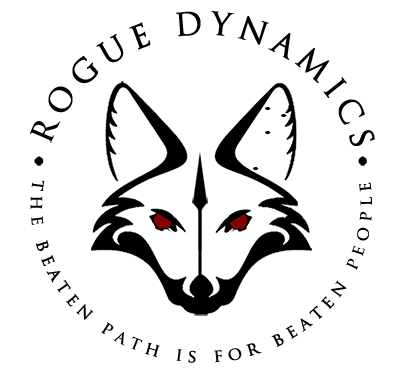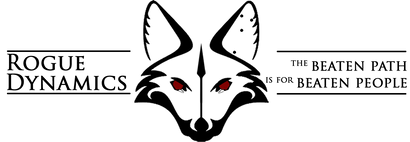
OP-ED: DIRECTED, INSPIRED & WERTHER TERRORISM

The chart above depicts significant terrorist attacks in Western Europe 1992 through 2016 year to date and shows a sharp rise 2014-2015. [1] In the editorial “Op-Ed from the Den: Understanding Terrorism” the author provided one potential understanding of terrorism to explain this increase. In summary:
“The shootings in Paris, the airport bombings in Brussels, and most recently, the truck crashing into a crowd in Nice were all committed by residents of those states, not foreigners who traveled there for the express purpose of committing the attack….In other words, when liberal democracy does not exist, or the procedures inherent to liberal democracy are not practiced equally unto citizens, a semi-repressive situation exists, in which (to some), a non-violent solution does not exist, because the state refuses to hear their voices. France and Belgium are prime examples of this.”[2]
Although I do not disagree with the author that semi-repression can be a source of terrorism, I disagree that understanding serves to explain this increase. Look at the timeline again. Was a long trend decrease in semi-repression the cause of a similar decline in terrorist attacks 1992-2014 only to be sharply reversed? What would explain such a sharp and rapid increase in, as the author puts it recognizing that “procedures inherent to liberal democracy are not practiced equally?” Obviously we can point to Islamic State of Iraq and Syria as an alternate cause – but that answer provides little additional understanding. My hope is to augment the understanding of sources of terrorism by offering an alternative understanding to the original authors, and how ISIS accomplished this increase in attacks so quickly in Western Europe.
First, it is important to understand ISIS is neither a terrorist network nor an insurgent non-state actor, but rather “an emerging-state actor, which uses methods of irregular warfare to capture territory…which it then attempts to govern in furtherance of its objective to become a functioning state.”[3] Second, we know from our own laws that terrorism is simply any “unlawful use of violence…to instill fear and coerce governments or societies in pursuit of goals”[4] Finally, a military definition of force projection is simply “ability to project the military instrument of national power from the [state] or another theater…in response to requirements for military operations.”[5]
With these terms I can propose my alternative ‘understanding’ to explain the increase in terror attacks in Europe:
ISIS is an emerging-state actor that employs terrorism as a military instrument of national power projected abroad against its adversaries.
The contrast between the two understandings should be clear. In the previous editorial, it is the environment from whence terrorism emerges. In my view, it is the environment which becomes the target for terrorism.
How do we know ISIS is targeting Western Europe? In some attacks the links are well established such as Brussels and Paris. For others, ISIS advertises the attack in advance. After the Brussels bombing an ISIS propagandist tweeted:
"After the bombs, expect our soldiers with Kalashnikov [rifles] in the streets…The second part of the plan is activated…Expect the next fireworks near you! #Germany You bombard us in the East so we bombard you in the West. Eye for eye, tooth for tooth. Expect more bombs, more death! Coming soon in Germany too!"[6]
In July, an ISIS soldier pretending to be an asylum seeker fulfilled that promise by detonating a suicide vest at the Ansbach music festival injuring 15. Again ISIS had projected an instrument of military power – a directed terrorist, to attack an adversary.[7] ISIS also distributes step-by-step guides of “how-to” instructions on how would be inspired terrorists can attack soft targets.[8] Part of the instructions include declaring the oath of allegiance (or bayat) to Al-Baghdadi and the so-called caliphate just prior or during the attack.
Understanding that ISIS is using terrorism as a form of force projection can be enhanced by knowing how ISIS accomplishes this. ISIS has three military instruments at its disposal for attacking foreign adversaries: directed, inspired and werther terrorism. The first should be familiar to most readers. Direct links of funding, training and communication between ISIS and the terrorist are established either by investigation before, or after the attacks.
An inspired terrorist is a self-radicalizing lone-wolf terrorist directly influenced ISIS’s radical propaganda. They follow the step-by-step instructions provided by ISIS through its publications of both tactics and announcements of targets. Through this means ISIS directs, at arms-length, the lone-wolves. Subsequent investigation may not reveal two-way interaction. But they will reveal a clear pattern of radicalization to include increasingly militant and radical statements. And the attacks themselves follow the publish tactics and target the proposed targets have announced.
However – what of the remaining terrorists the author describes? A group of would-be or actual terrorists who seem to emerge from within the environment itself: they are residents, they have not been self-radicalized and they have no obvious alignment with ISIS. So why do they commit terrorist attacks? And why have those attacks increased so dramatically, what caused the change?
This last group of actors is what I propose are werther terrorists. Understanding werther terrorism places their actions clearly back in the context of a military instrument of ISIS. The werther effect is a well studied effect that when a celebrity commits a suicide that is highly publicized; there is an immediate ‘pulse’ of increased ideation of suicide, leading to increased attempts leading to an increase in suicides. This effect is short lived, perhaps only 14days long. However, not only does the copier seek to mimic the outcome – but also the methods by which the celebrity committed suicide.
In a simulation model tested theories of werther effect in copy-cat suicides. The findings suggested three factors were necessary to generate mass clusters occurring after a major suicide that were not geographically confined to where the suicide occurred. First, abundant access to social-media provided one-to-many transmission spreading the idea of suicide across an entire population. Second prestige bias narrowed that population down to those who saw the celebrity as someone famous or noteworthy. Finally, similarity bias further narrowed that population down to those ‘who saw themselves’ in the celebrity by sharing common ethnographic traits.[9] Werther transmission has also been found in aggressive acts, spread by sensational media reporting and again showing the strong similarity bias; spreading along vectors of ethnographic similarity. A key element of the werther effect is that not just the idea, but the modus operandi of the suicide or aggressive act is copied as well.[10] If a suicide is committed by hanging, or an aggressive act is committed with knifing – those are the means that are copied.
I am proposing that werther terrorism is a second-order effect to directed or inspired terrorist attacks. Actors take inspiration, not from ISIS, but from the notoriety of attacks themselves duplicating methods in an attempt to replicate that notoriety. Because the original acts follow step-by-step instructions, so to do werther terrorist acts follow the same instructions. This includes declaring bayat – after which ISIS can claim credit for an “inspired” attack. The notoriety of these werther terrorist attacks then spawn their own werther terrorist imitations. The quintessential werther terrorist attack is the Orlando Pulse Club Shooting – what could be more notorious than pairing world-wide coverage of high-profile active-shooter style mass-murders with the infamy of the Islamic State?
Recently, Clint Watts a Fellow of the Foreign Policy Institute and Senior Fellow for Cyber and Homeland Security at George Washington University testified before Congress on the differences between directed and inspired ISIS attacks. He distinguished between two types of inspired terrorist acts. The first are committed by those who have radicalized slowly and reached a “resolve for violence over many years; deliberately planning and plotting their attacks.”[11] The second however are committed by:
“dozens of other perpetrators with a mix of psychological issues and egomaniacal motivations rapidly mobilize in response to successful Islamic State attacks hoping to join the band wagon. Headline inspired attacks come in reactionary waves and feature a mix of bumbled plots and unforeseeable terrorist successes. These attacks target randomly and despite their wide range of success often times generate additional headline inspired attacks in the name of the Islamic State.” [12]
According to Watts the Archer attack in Philadelphia, Zehaf-Bibeau’s attack on the Canadian parliament and the aforementioned Orlando Pulse club shooting are examples of this second kind. Although Watts did not use the phrase, what he describes fits what I propose as werther terrorism.
The understanding now how ISIS projects its military instruments of national power leveraging directed, inspired and werther terrorist attacks is pictured below:

This shows now how the original force projection of directed and inspired attacks as military instruments of state power can create the werther terrorist acts. And werther terrorism goes a long way to explaining some of the unexplainable in recent attacks. Why did the Orlando Pulse club shooter express sympathy for both ISIS and Hezbollah, bitter enemies fighting one another in Syria? In Nice – looking for a profile that fits directed or inspired terrorism leaves nothing but confusion. The six person cell is multi-national including representation from France, Franco-Tunisia and Albania. It is unlikely they were protesting semi-repressive states in all three locations. Yet, they never declared bayat and had no history of prior radicalization. Was it then the environment, the semi-repressive political state which emerged the terrorism as the author proposed? However – when looking for characteristics shared with mass-shooters, many more are found. Family difficulties leading to restraining orders are not a hallmark of a directed terrorist who seeks to avoid the eye of law-enforcement, but they are a characteristic of a potential mass shooter. Self-aggrandizement, rather than promoting the cause, is another characteristic. One of the Nice suspects documented preparations with cell-phone pictures and even filmed the immediate aftermath…before taking a selfie of himself.[13] The werther terrorist profile fits better here than a directed, inspired or semi-repressed terrorist profile.
CONCLUSION
The original editorial asks the readers to understand terrorism in the context of a rapid increase in European attacks. The author offers an understanding of terrorism used by semi-repressed people to react violently when their voices cannot be heard. However I propose an alternate cause and understanding. As an emerging-state actor ISIS employs terrorism as a military instrument of national power projected against its adversaries through the three means of directed, inspired and werther terrorist acts. Directed terrorist attacks are operationally coordinated with ISIS while inspired terrorist attacks are carried out by radicalized individuals following ISIS templates but lack direct ties to ISIS. Werther terrorism is inspired by the first two acts, and the actors may have no clear radicalization or ideological reasons for committing the attacks other than notoriety. However, copying methods, werther terrorists bumble through declaring bayat in an attempt to increase the notoriety and thus get lumped in with other ISIS attacks.
How ready are we to stop werther terrorism? How do we identify and stop an actor who commits a terrorist act simply because someone else did it before them? How do we interrupt the feedback effect? The more directed and inspired terrorist attacks – the more werther terrorist attacks. The more werther terrorist attacks – the more subsequent werther terrorist attacks will occur. Fortunately, as the werther effect is well studied in suicides, so to are a set of protocols for mitigating this effect already in place in terms of suicide. Both the CDC and the WHO have issued media guidelines on how news agencies should report on suicides. Comparing these guidelines to how we report on ISIS directed or inspired terrorist attacks indicates we are on the exact opposite end of the spectrum.[14] And now, with enhanced understanding of what actually motivates werther terrorists, additional policies can be taken to reduce it. Clearly eliminating ISIS’s base of operations in Syria and Iraq is one of many steps. Breaking up the directed terrorist networks in Europe is another. Pulling from the playbook of reducing or mitigating active shooter mass-shooter attacks offer additional insights not found in the tactics to deal with copy-cat suicides. None of this is to discount the long-term other benefits of political reform of unjust or structurally unequal parts of society shouldn’t be pursued. But, when these attacks are understood as werther terrorism, the policy set of options become much more tangible and concrete, rather than a grandiose and perhaps unrealistic reform of all of political society as a means of reducing the current upswing in attacks.
“Assassination Operations.” Inspire Magazine via Global Terrorism Research Project, Spring 2016.
Clancy, Timothy. “Dynamics of ISIS - An Emerging State Actor.” Delft Netherlands: System Dynamics Society, 2016.
Editorial Staff. “François Molins Reveals Several Significant Advances on the Accomplices and the Long Premeditation Mohamed Lahouaiej Boulhel in Nice Attack.” News. Hufftington Post France, August 3, 2016. http://www.huffingtonpost.fr/2016/07/21/francois-molins-revelations-attentat-de-nice_n_11112398.html.
“Global Terrorism Database [Data File]. [2015].” National Consortium for the Study of Terrorism and Responses to Terrorism (START). Accessed August 5, 2016. http://www.start.umd.edu/gtd.
“Joint Publication 1-02: Dictionary of Military and Associated Terms.” United States Department of Defense, n.d.
Joscelyn, Thomas. “Attacks in France and Germany Claimed by Islamic State Propaganda Arm.” News. The Long War Journal, July 26, 2016. http://www.longwarjournal.org/archives/2016/07/attacks-in-france-and-germany-claimed-by-islamic-state-propaganda-arm.php.
Mesoudi, Alex. “The Cultural Dynamics of Copycat Suicide.” PLoS ONE 4, no. 9 (September 30, 2009). doi:10.1371/journal.pone.0007252.
O’Carroll, Patrick, and Lloyd B. Potter. “Suicide Contagion and the Reporting of Suicide: Recommendations from a National Workshop,” n.d. http://www.cdc.gov/mmwr/preview/mmwrhtml/00031539.htm.
One of Many Filthy Rogues. “Op-Ed from the Den: Understanding Terrorism,” n.d. http://www.roguedynamics.com/blog/2016/7/27/op-ed-from-the-den-understanding-terrorism.
Prince, S.J. “‘ISIS’ Promises more attacks in Europe on Twitter after Brussles Attack.” Heavy.com, n.d. http://heavy.com/news/2016/03/isis-promises-more-attacks-in-europe-on-twitter-after-brussels-attacks/.
Schmidtke, A, S Schaller, and I Muller. “Imation of Amok & Amok Suicide.” Crisis Magazine 10, no. 2 (n.d.): 49–60.
Watts, Clint. “Directing vs. Inspiring: ISIS’ Evolving Tactics and the Orlando Terrorist Attack,” 2016.
[1] 1992-2015 Data provided by “Global Terrorism Database [Data File]. [2015].” 2016 Data provided by “Terrorism in the European Union” https://en.wikipedia.org/wiki/Terrorism_in_the_European_Union
[2] One of Many Filthy Rogues, “Op-Ed from the Den: Understanding Terrorism.”
[3] Clancy, “Dynamics of ISIS - An Emerging State Actor.”
[4] “Joint Publication 1-02: Dictionary of Military and Associated Terms.”241.
[5] Ibid., 90.
[6] Prince, “‘ISIS’ Promises more attacks in Europe on Twitter after Brussels Attack.”
[7] Joscelyn, “Attacks in France and Germany Claimed by Islamic State Propaganda Arm.”
[8] “Assassination Operations.”
[9] Mesoudi, “The Cultural Dynamics of Copycat Suicide.” 8
[10] Schmidtke, Schaller, and Muller, “Imation of Amok & Amok Suicide.” 49
[11] Watts, “Directing vs. Inspiring: ISIS’ Evolving Tactics and the Orlando Terrorist Attack,” sec. Committee On Foreign Affairs, Subcommittee on Terrorism, Nonproliferation and Trade. 3
[12] Ibid. 3
[13] Editorial Staff, “François Molins Reveals Several Significant Advances on the Accomplices and the Long Premeditation Mohamed Lahouaiej Boulhel in Nice Attack.”
[14] O’Carroll and Potter, “Suicide Contagion and the Reporting of Suicide: Recommendations from a National Workshop.”



